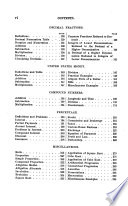 | James Stewart Eaton - 1862 - 320 pages
...369. PROBLEM 1. To find the last term, the first term, common difference, and number of terms being given : RULE. Multiply the common difference by the number of terms less 1 ; add the product to the first term if the series is ascending, or subtract the product from the... | |
 | James Stewart Eaton - Arithmetic - 1864 - 322 pages
...369. PROBLEM 1. To find the last term, the first term, common difference, and number of terms being given : RULE; Multiply the common difference by the number of terms less 1 ,' add the product to the first term if the series is ascending, or subtract the product from the... | |
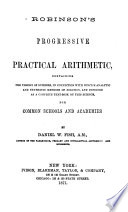 | Horatio Nelson Robinson, Daniel W. Fish - Arithmetic - 1871 - 384 pages
...as there are terms less one. , NOTE. The analysis for a descending scries would be similar. Hence, RULE. Multiply the common difference by the number of terms less one, and add the product to the first term, if the series be ascending, and subtract it if the series be... | |
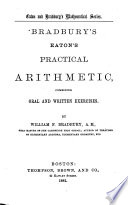 | William Frothingham Bradbury - 1882 - 416 pages
...descending. Hence, 586. The first term, common difference, and number of terms given, to find the last term. Rule. Multiply the common difference by the number of terms less one; add the product to the first term if the series is ascending, or subtract the product from the first... | |
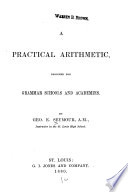 | George E. Seymour - Arithmetic - 1880 - 332 pages
...for finding the last term, when the first term, common difference, and number of terms are known : RULE. — Multiply the common difference by the number of terms less one, and add the product to the first term, if an increasing series; but subtract it from the first term,... | |
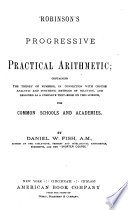 | Horatio Nelson Robinson - 1888 - 372 pages
...the first term as there are terms less one. The analysis for a descending series would be similar. RULE. Multiply the common difference by the number of terms less one, and add the product to the first term, if the series be ascending, and subtract it if the series be... | |
 | Charles Davies - Algebra - 1891 - 306 pages
...a — (n — 1) d. Hence, to find the last term of a decreasing progression, we have the following rule : — Multiply the common difference by the number of terms less one. Exercises. 1. The first term of a decreasing progression is 60, the number of terms 20, and the common... | |
 | William Frothingham Bradbury - Arithmetic - 1895 - 398 pages
...descending. Hence, 586. The first term, common difference, and number of terms given, to find the last term. Rule. Multiply the common difference by the number of terms less one ; add the product to the first term if the series is ascending, or subtract the product from the first... | |
 | Charles Davies - Algebra - 1891 - 312 pages
...a — (n — 1) d. Hence, to find the last term of a decreasing progression, we have the following rule : — Multiply the common difference by the number of terms less one. Subtract the product from the first term. The remainder will be the last term. Exercises. 1. The first... | |
 | Daniel Adams - Arithmetic - 1848 - 310 pages
...the last term of an ascending series when the first term, common difference, and number of terms are given,, RUL.E. Multiply the common difference by the...the first term ; the amount will be the last term. NOTE 2. — If the same things are given of a descending seres, we must evidently take the sum of the... | |
| |